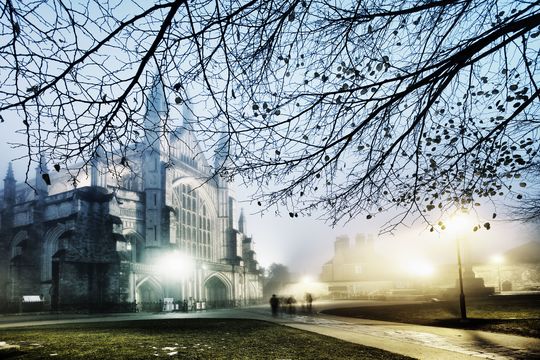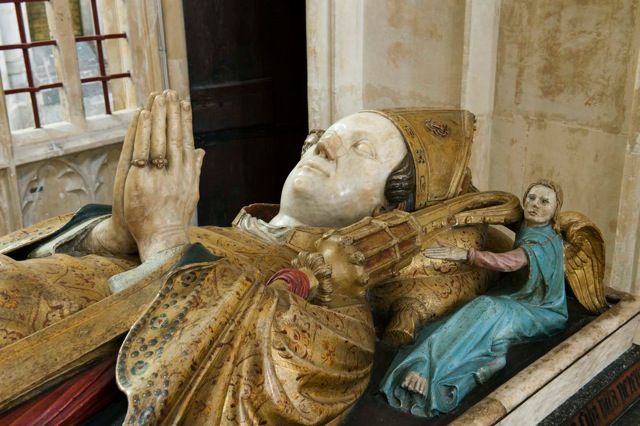
A view of Winchester Cathedral on a winter's eveningWinchester Cathedral
Scientists from the University of Bristol, in 2019, discovered 1,300 human bones from Winchester Cathedral and now believe that some of the remains may belong to Queen Emma of Normandy who died in 1052 in Winchester.
The scientists have been sorting the bones with the aim of matching the remains with the names of eight kings, two bishops, and one queen whose titles are on six mortuary chests.
The conversation project started in 2012, but it wasn't until 2015 that radiocarbon dating carried out by experts from the University of Oxford confirmed the bones were from the late Anglo-Saxon and early Norman periods. The team are now trying to match the bones with burial records.
Read more
A cathedral spokesman said: “This process involves recording the contents of the chests and determining the number of individuals represented, along with their sex, age at death and physical characteristics.
Flanked by angels and crozier, the Bishop’s alabaster effigy prays / Photo by John Crook
“Working in the Lady Chapel at Winchester Cathedral, which became a temporary laboratory, the researchers reassembled over 1,300 human bones, with the aim of restoring the identity of the kings, one queen, and several bishops traditionally thought to be within the chests.”
So far, 23 partial skeletons have been reconstructed, despite only 15 people being named on the chests. Scientists are now trying to discover the identity of the extra bodies.
The spokesman said: “The ability to identify the sex, age and physical characteristics of these individuals has resulted in some exciting discoveries, including the remains of a mature female dispersed within several chests.
“It is not yet certain, but these bodily remains could be those of Queen Emma, daughter of Richard I, Duke of Normandy, the wife of two successive kings of England, Ethelred and Cnut, and the mother of King Edward the Confessor and King Hardacnut.
“She was a powerful political figure in late Saxon England, and her family ties provided William the Conqueror with a measure of justification for his claim to the English throne.
“Completely unexpected was the discovery of two juvenile skeletons, adolescent boys who had died between the ages of 10 to 15 years in the mid-11th to late 12th-century.
Professor Kate Robson Brown, who led the investigation, said: “We cannot be certain of the identity of each individual yet, but we are certain that this is a very special assemblage of bones.”
The cathedral spokesman added: “These discoveries could place Winchester Cathedral at the birth of our nation and establish it as the first formal royal mausoleum."
* Originally published in May 2019.





Comments